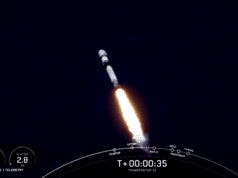The City Hall of Rio de Janeiro gave new impetus to the completion of the mapping of the city’s underground networks by publishing on the Official Gazette of the City, last Monday, deadlines for utilities concessionaires to deliver the updated records of their networks. The purpose is to finalize the Construction on Public Roads Management System, Geovias — a digital map with information on the lines of the five major utilities concessionaires in the City: CEG, Light, Cedae, Oi and Embratel. With these data, the City Hall hopes to avoid pipe breaks during construction works, which often causes shortages of water, electricity and internet and traffic problems.
90% of the city networks are already in the system — when it went into operation eight months ago, there were only 30%. Geovias was programmed by an outsourced company, in partnership with the Pereira Passos Institute (IPP), and it is incumbent upon the City Hall the unification and administration of records which, in addition to providing the networks’s locations, provide information about the material and diameter of pipelines.
Geovias has two great virtues: planning and subsoil knowledge. In the city daily operation, we can minimize execution problems on the streets. Today, all licensing passes through the system. If so, we do not allow and we propose a new project. Thus, we reduce the problems related to the operation. A few years ago, a concessionaires’s construction could end up hiting another company’s pipe. I was a great achievement for Rio. It is the only city in the country with all this subsoil inventory — said Secretary of Conservation, Marcus Melchior, responsible for the system.
Before the creation of Geovias, it was very difficult to verify the existence of buried structures without digging. Geovoxel — a company created in the Coppe Incubator of the Federal University of Rio de Janeiro —is one of the few that have the technology for this: the georadar. The Canadian Louis-Martin Losier, a partner, says that about 15 companies hired their services for prospecting underground for constructions since 2011.
Source: O Globo




